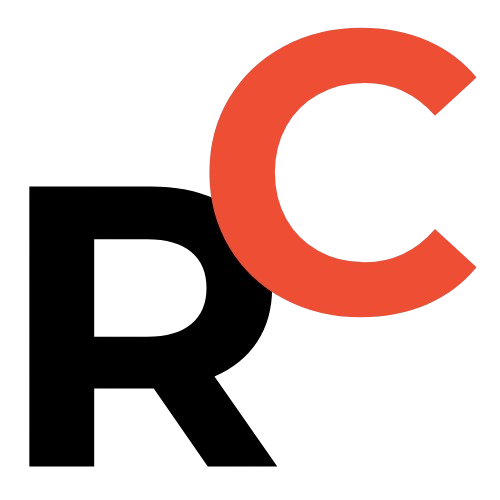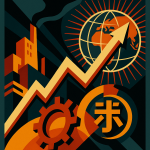Key Points
- China is launching a new “national subsidy” plan for personal consumption loans and service industry business loans, approved by the State Council on July 31, 2025.
- The initiative aims to stimulate consumption and support businesses by reducing borrowing costs, targeting both demand (consumers) and supply (service businesses).
- For personal consumption loans (e.g., cars, home appliances, tourism), the goal is to drive the actual interest rate down to below 3% with fiscal subsidies.
- For service industry business loans (e.g., catering, domestic services, childcare), the proposal includes a 1-2 percentage point interest subsidy.
- Strict supervision and fund tracking are emphasized to ensure proper usage, with financial institutions like MaShang Consumer Finance (马上消费) already launching relevant products.

China is rolling out a major China consumption loan subsidy program, effectively creating a financial “national subsidy” to fire up its economy.
On July 31, 2025, the State Council, led by Premier Li Qiang, gave the green light to a new policy that’s got everyone talking: interest subsidies for personal consumption loans and loans for service industry businesses.
Think of it as the government stepping in to make borrowing cheaper for both everyday people and the businesses that serve them.
The goal? To get people spending and to help small businesses thrive.
As one financial industry insider put it to CaiLianShe (财联社), this is a two-pronged attack, targeting both the supply (service businesses) and demand (consumers) sides of the economy.

Resume Captain
Your AI Career Toolkit:
- AI Resume Optimization
- Custom Cover Letters
- LinkedIn Profile Boost
- Interview Question Prep
- Salary Negotiation Agent

What’s the Big Deal? A “National Subsidy” for Your Wallet
Experts are calling this a game-changer.
Su Xiaorui (苏筱芮), a senior researcher at Sooci Think Tank (Suxi Zhiyian 素喜智研), dubbed the policy a “national subsidy” in the financial sector.
It’s designed to slash borrowing costs, making it easier for people with real spending needs to get a loan without getting crushed by high interest rates.
Zeng Gang (曾刚), Director of the Shanghai Finance and Development Laboratory, believes this will:
- Reduce credit costs for households.
- Lower financing costs for service-based businesses.
- Stimulate massive consumption potential and market vitality.
- Help China’s economy weather fluctuations in external demand.
- Drive the long-term upgrade of consumption infrastructure and services.
Essentially, it’s about making money more accessible to boost spending and expand domestic demand.
This isn’t a new idea, but it’s a major step up. Earlier this year, regulators were already pushing financial institutions to expand service and goods consumption. This new policy is the detailed playbook for making that happen.

The Nitty-Gritty: How the Subsidies Will Work
The policy focuses on two key areas with specific recommendations on the table.
For Personal Consumption Loans
The focus is on big-ticket items that move the economic needle.
- Car purchases
- Home appliance upgrades
- Cultural and tourism spending
The recommendation from industry insiders? Get banks to offer reasonable loan amounts and terms, and use the fiscal subsidy to push the actual interest rate down to below 3%.
This makes that new car or dream vacation suddenly much more affordable.
For Service Industry Business Loans
This is a lifeline for the small and medium-sized enterprises (SMEs) that form the backbone of the service economy.
We’re talking about businesses in:
- Catering and restaurants
- Domestic services (like cleaning and home care)
- Childcare
For these businesses, the proposal is a 1-2 percentage point interest subsidy, depending on the loan’s term.
This directly lowers their operating costs and frees up cash to expand, hire, and improve their services.

Find Top Talent on China's Leading Networks
- Post Across China's Job Sites from $299 / role, or
- Hire Our Recruiting Pros from $799 / role
- Qualified Candidate Bundles
- Lower Hiring Costs by 80%+
- Expert Team Since 2014
Your First Job Post

Playing by the Rules: Ensuring the Money Goes to the Right Place
- Strict supervision to prevent fraud and ensure funds are used efficiently.
- Simplifying Applications to cut red tape.
- Targeted Irrigation to tie subsidies to specific consumption scenarios.
- Strict Oversight for financial institutions to double-down on risk control.
- Fund Tracking by banks from disbursement to subsidy application.
The State Council was crystal clear: this money needs to be used properly.
They’re emphasizing strict supervision to prevent fraud and ensure funds are used efficiently.
Key measures for compliance include:
- Simplifying Applications: Cutting red tape so the policy can be rolled out quickly.
- Targeted Irrigation: As Su Xiaorui suggests, the subsidies should be tied to specific consumption scenarios and business needs, not just a free-for-all.
- Strict
Oversight: Financial institutions are being told to double-down on risk control. - Fund Tracking: Banks must track loans from disbursement to subsidy application, ensuring the money is used for its intended purpose—whether that’s a new EV or inventory for a restaurant.
Zeng Gang stressed that banks need to strictly review loan purposes through contractual agreements and post-lending follow-ups.

ExpatInvest China
Grow Your RMB in China:
- Invest Your RMB Locally
- Buy & Sell Online in CN¥
- No Lock-In Periods
- English Service & Data
- Start with Only ¥1,000

How China’s Financial Giants Are Already Responding
China’s financial institutions aren’t waiting around. They’re already rolling out initiatives to support this consumption push.
MaShang Consumer Finance (MaShang Xiaofei 马上消费), for example, has already launched specialized products like the “Consumption Upgrade Loan,” “Comfortable Living Loan,” and “Green Consumption Loan.”
One major joint-stock bank told reporters they’ve refined their “roadmap” to boost consumption through a mix of:
- Credit Support: Offering loans designed for the new subsidy policies.
- Scenario Discounts: Partnering with retailers for extra deals.
- Green Incentives: Promoting eco-friendly consumption.
This builds on a June 2025 directive from the People’s Bank of China (PBOC 中国人民银行) and other departments, which encouraged consumer finance companies to issue financial bonds to raise funds and expand their lending capabilities.
In the past month alone, we’ve seen a flurry of bond issuances from consumer and auto finance companies, signaling that the industry is gearing up for a huge wave of lending.
This China consumption loan subsidy is more than just a policy announcement; it’s a coordinated effort between the government and the financial industry to kickstart a new era of domestic growth.






